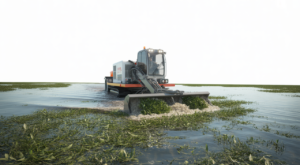Understanding Military Crash Pads: Essential Features And Benefits

Military crash pads are engineered with a range of features to ensure maximum protection and comfort for soldiers. One of the most crucial aspects is their ability to absorb and dissipate impact energy, reducing the risk of injury during falls or collisions. High-density foam, gel inserts, and advanced cushioning materials are commonly used to achieve this. Additionally, military crash pads are designed to be lightweight and flexible, allowing for ease of movement without compromising protection. These pads also often feature moisture-wicking and antibacterial properties to enhance comfort during extended use. The benefits of military crash pads extend beyond injury prevention; they also contribute to overall mission readiness by allowing soldiers to train and operate more effectively in high-risk environments.
The Importance Of Military Crash Pads In Training And Combat
Military crash pads play a pivotal role in both training and combat scenarios by providing essential protection against injuries. In training environments, soldiers are frequently exposed to simulated combat situations that involve physical contact, high-impact movements, and potential falls. Crash pads help mitigate the risks associated with these activities, allowing for more realistic and intensive training without the immediate threat of severe injury. In combat, the use of crash pads becomes even more critical, as they protect soldiers from the impact forces experienced during maneuvers, jumps, or collisions with obstacles. The ability of crash pads to reduce injury risk ensures that soldiers can focus on their missions with greater confidence and resilience, ultimately enhancing their overall performance and effectiveness.

Military Crash Pads: Innovations And Technological Advancements
The field of military crash pads has seen significant innovations and technological advancements in recent years. Modern crash pads incorporate cutting-edge materials and design techniques to enhance their protective capabilities. For instance, advancements in impact-absorbing foams and gels have led to the development of pads that offer superior cushioning and energy dispersion. Additionally, new manufacturing processes, such as 3D printing, have enabled the creation of custom-fit crash pads tailored to individual needs. Innovations also include the integration of smart technologies, such as sensors that monitor impact forces and provide real-time data on the effectiveness of the pads. These technological advancements contribute to more effective and reliable protection, ensuring that military crash pads continue to meet the evolving demands of modern combat and training environments.
How Military Crash Pads Enhance Safety And Reduce Injury?
Military crash pads are specifically designed to enhance safety and reduce the risk of injury through their advanced cushioning and impact-absorbing properties. By dispersing the forces of impact across a larger surface area, crash pads minimize the stress placed on any single point of the body, thereby reducing the likelihood of fractures, bruises, and other injuries. The use of high-density foams and gel materials helps to absorb and dissipate impact energy, providing a protective barrier between the soldier and potential sources of harm. Additionally, the ergonomic design of crash pads ensures a snug fit, which further enhances their effectiveness by preventing shifts and ensuring consistent protection. Through these mechanisms, military crash pads play a crucial role in safeguarding soldiers during high-impact activities and ensuring their well-being.
Choosing The Right Military Crash Pads For Different Scenarios
Selecting the appropriate military crash pads for various scenarios requires careful consideration of several factors, including the nature of the activity, the level of impact expected, and individual comfort preferences. Different types of crash pads are designed to address specific needs, such as those used for high-altitude jumps, urban combat, or training exercises. For example, crash pads designed for parachute jumps may feature enhanced cushioning and stability to protect against the forces of landing, while those used in urban combat may prioritize flexibility and mobility. Additionally, it is important to consider factors such as pad size, weight, and adjustability to ensure a proper fit and maximum protection. By understanding the specific requirements of each scenario, military personnel can make informed decisions and choose crash pads that provide optimal performance and safety.
Military Crash Pads: Comparing Different Types And Their Uses
There are various types of military crash pads, each designed for specific uses and environments. For instance, impact-resistant foam pads are commonly used for general training and combat scenarios, providing effective cushioning and shock absorption. Gel-based crash pads, on the other hand, offer superior impact dispersion and are often utilized in high-risk activities such as parachuting or rapid descent operations. Additionally, some crash pads are designed with modular components that can be customized based on the specific needs of the mission or training exercise. Each type of crash pad comes with its own set of advantages and trade-offs, making it essential to compare their features and intended uses to determine the most suitable option for a given situation.
The Role Of Military Crash Pads In Modern Combat Gear
In modern combat gear, military crash pads are integral to ensuring soldier safety and performance. As combat scenarios become increasingly complex and demanding, the need for effective protective equipment becomes more critical. Crash pads contribute to modern combat gear by providing essential protection against impacts and injuries, allowing soldiers to operate with greater confidence and efficiency. They are often incorporated into a range of gear, including body armor, helmets, and tactical vests, to offer comprehensive protection across different areas of the body. By integrating crash pads into their gear, military forces enhance their ability to withstand the rigors of combat while maintaining high levels of mobility and operational effectiveness.
Maintenance And Care Tips For Military Crash Pads
Proper maintenance and care of military crash pads are essential to ensure their longevity and effectiveness. Regular cleaning and inspection are crucial to maintaining the integrity of the padding and preventing the buildup of dirt or bacteria. Most crash pads can be cleaned using mild detergents and water, with thorough drying to prevent mold or mildew growth. Additionally, it is important to check for any signs of wear or damage, such as cracks, tears, or compression, which may affect the protective performance of the pads. Storing crash pads in a dry, cool place when not in use can also help preserve their condition. Following these maintenance and care guidelines ensures that military crash pads remain in optimal condition and continue to provide reliable protection.
Conclusion
Military crash pads are an indispensable component of modern military equipment, offering vital protection and comfort during both training and combat scenarios. Their advanced features, technological innovations, and role in enhancing safety underscore their importance in safeguarding soldiers from injuries. By understanding the various types, uses, and maintenance of crash pads, military personnel can make informed decisions and ensure they have the right equipment for their specific needs. As military operations continue to evolve, so too will the development of crash pads, reflecting ongoing advancements in technology and materials. Ultimately, the continued emphasis on effective crash pads will contribute to the overall safety, performance, and readiness of military forces around the world.







